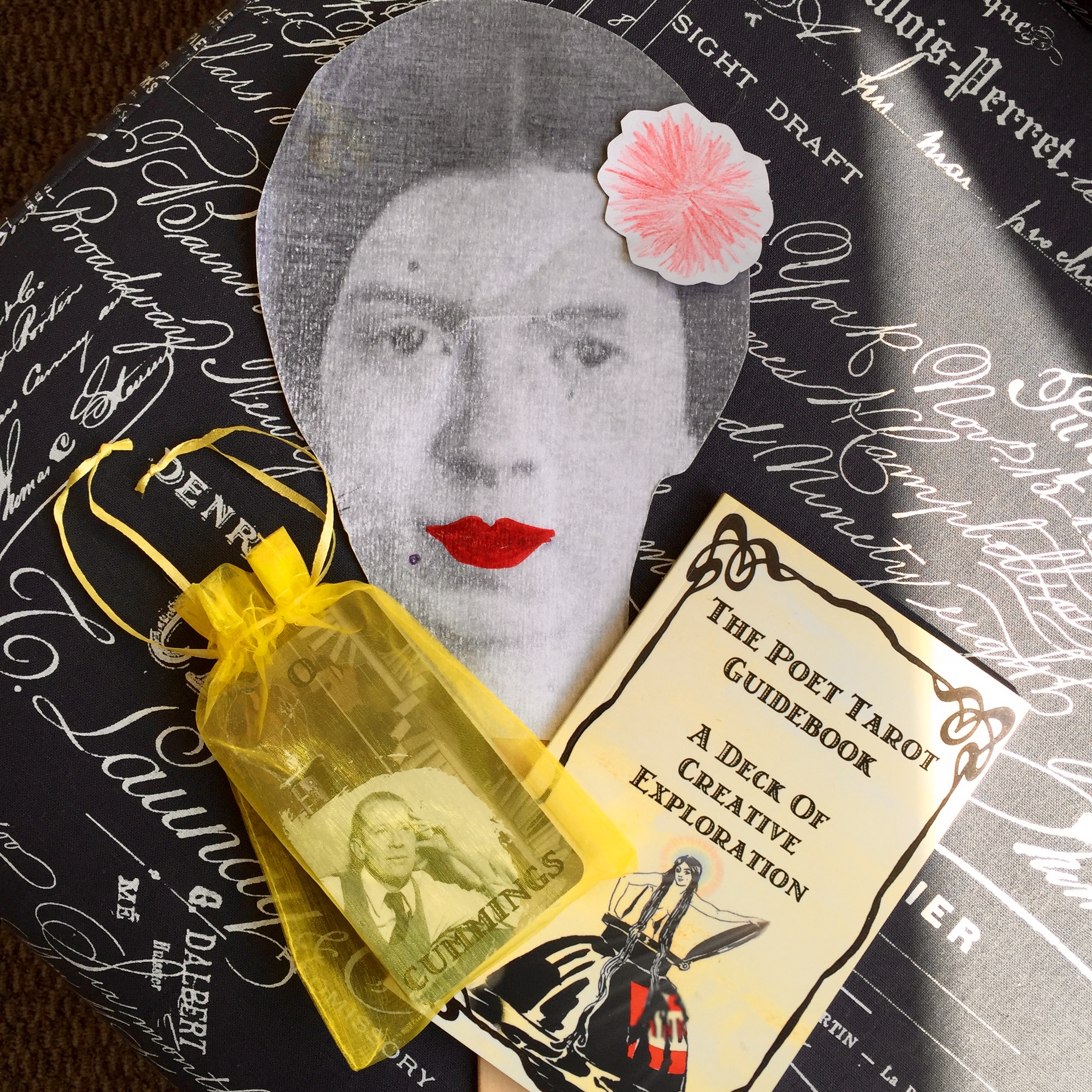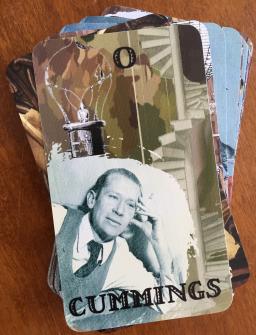Finding Guidance from Dead Poets: The Poet Tarot, Dreams, and Books

Today, e. e. cummings told me to “let go of your anxieties and take more risks in your creativity and artistic expression.” Of course, e. e. cummings didn’t walk into my writing studio to tell me this, but I had drawn my morning tarot card from The Poet Tarot: A Deck of Creative Exploration. I have always loved to roam through cemeteries, retracing the steps of the writers who have gone before me. Using The Poet Tarot is similar to a walk through the paper gravestones of poets, but in this case, the dead poets have something to teach you.
The Poet Tarot has become my favorite way to “check in” with my writing self and gain insight into my current projects as well as my creative life. I was a fan of tarot cards before we created The Poet Tarot at Two Sylvias Press, but using this deck, one that we specifically created for writers and artists, has made the insights so much more relevant to me. And I’ve found notable patterns in my daily drawings of cards—e. e. cummings appears for me more than any other poet in the deck. (Of course, much of the meaning of the e. e. cummings card returns to the idea of leaving one’s comfort zone, a place I spend quite a bit of time in, so it makes sense it’s being suggested that I stretch myself in this area.)
 As a poet myself, I believe in this idea of “Dead Mentors”. Dead Mentors can help us find guidance and inspiration by reading and researching poets who have already left this planet. I have turned to the books of dead poets, specifically Ariel by Sylvia Plath and Meditations in an Emergency by Frank O’Hara, and through their words I was able to find help with my own poems. I have read Elizabeth Bishop’s letters to Robert Lowell, and I have learned their biographies. My favorite books are Poets in their Youth: A Memoir by Eileen Simpson and Savage Beauty: The Life of St. Vincent Millay by Nancy Milford.
As a poet myself, I believe in this idea of “Dead Mentors”. Dead Mentors can help us find guidance and inspiration by reading and researching poets who have already left this planet. I have turned to the books of dead poets, specifically Ariel by Sylvia Plath and Meditations in an Emergency by Frank O’Hara, and through their words I was able to find help with my own poems. I have read Elizabeth Bishop’s letters to Robert Lowell, and I have learned their biographies. My favorite books are Poets in their Youth: A Memoir by Eileen Simpson and Savage Beauty: The Life of St. Vincent Millay by Nancy Milford.
And this may sound a little strange (but remember, you are reading the blog post of a poet who has always loved wandering through cemeteries), but for a while, Pablo Neruda would visit me in my dreams and offer advice. Once he came into my dream with ideas of where to send my manuscript. Once he walked through my dream and looked at me, the way one would look directly into a camera, and said, “Write a poem about my hat, I keep my notes in there.” Advice I took (you can read the poem inspired from that dream here at poet, Luisa Igloria’s blog).
The Poet Tarot helps keep me connected to poets of the past and to my own creativity. I take it with me on writing residencies, and now, there’s even a Poet Tarot App available for iPhone and Android phones, so I have it with me where I go.
Spending time with the poets who have left us, either through poems or dreams, tarot cards or biography, makes me feel more connected to something larger, perhaps, an ongoing conversation? Perhaps, a community that stretches across that invisible line of life and death. There is so much in this world that tries to quiet the artist in us. For me, staying connected with the poets and artists who came before me sparks my own creativity. It reminds me to exist on my own path in a world that sometimes doesn’t seem to value words and poems as much as I do, in a world that forgets to pause for a moment and remember the gifts, the offerings from those who have passed on.
Kelli Russell Agodon did the graphic design on the The Poet Tarot and The Poet Tarot App. She’s an editor and book cover designer at Two Sylvias Press in Seattle. Her third collection of poems, Hourglass Museum, was a finalist in the Washington State Book awards and short-listed for the Julie Suk Poetry Prize honoring the best book of poems published by a small press. She is also the coauthor of The Daily Poet: Day-By-Day Prompts For Your Writing Practice. Her other books are Letters from the Emily Dickinson Room (Winner of the Foreword Book of the Year in Poetry and Finalist for the 2010 Washington State Book Prize), Small Knots, Geography, and Fire On Her Tongue: An Anthology of Contemporary Women's Poetry. Her work has appeared in The Atlantic, O, The Oprah Magazine, Prairie Schooner, New England Review, as well as on "The Writer's Almanac" with Garrison Keillor and in Keillor's Good Poems for Hard Times anthology. She also is the codirector of Poets on the Coast: A Retreat for Women Poets. http://www.agodon.com/ http://www.twosylviaspress.com
Recommended
Nor’easter
Post-Op Appointment With My Father
Cedar Valley Youth Poet Laureate | Fall 2024 Workshop





